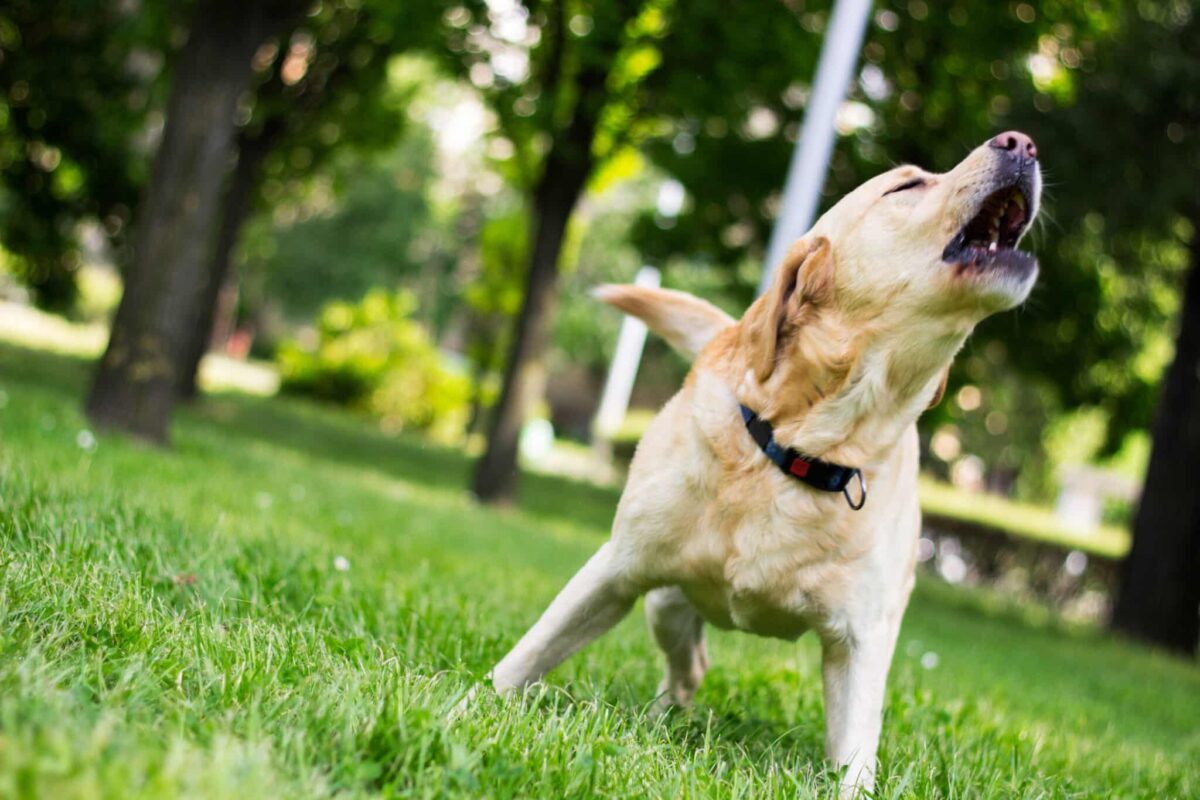 Shutterstock
Shutterstock
Dogs can’t speak our language, but they’re remarkably good at showing when they’re feeling under-stimulated. Boredom isn’t just a matter of having nothing to do—it’s a lack of mental, physical, or emotional engagement that can leave dogs feeling frustrated and restless. That restlessness often leads to creative chaos, like shredded pillows, chewed furniture, or mysteriously vanished shoes. Recognizing these signals early can help protect your belongings, preserve your sanity, and most importantly, keep your dog happy, healthy, and far less likely to transform your home into their boredom playground.
Excessive Barking
 Shutterstock
Shutterstock
If your dog has suddenly decided to narrate every passing car, squirrel, or dust particle, boredom could be the cause. Dogs bark to release pent-up energy, and when there’s nothing else to do, being loud becomes their favorite pastime. This barking often sounds different—more persistent, attention-seeking, or even slightly frantic. Giving them something more constructive to focus on can help reduce the noise level.
Destructive Chewing
 Shutterstock
Shutterstock
One of the most common signs your dog is bored is when they treat your furniture, shoes, or remote control like chew toys. Chewing is a natural stress reliever and energy outlet, so when a dog is left with nothing to do, they’ll find their form of entertainment. Unfortunately, that entertainment often results in shredded couch cushions or mysteriously disappearing socks. Providing chew toys, puzzles, or interactive games can help productively redirect their chewing urges.
Digging Like They’re Headed to Australia
 Shutterstock
Shutterstock
If your dog is tearing up your backyard like they’ve got a secret map to buried treasure, boredom may be driving their excavation hobby. Digging is instinctual, but when it becomes excessive or focused in certain areas, it’s often a sign of mental or physical frustration. This behavior gives them something to do and can be surprisingly rewarding for a bored pup. Adding exercise or mental stimulation to their daily routine can make the yard a little less cratered.
Pacing or Restlessness
 Shutterstock
Shutterstock
A bored dog doesn’t sit still for long—they’ll pace back and forth like they’re rehearsing for a canine version of Hamlet. This restlessness often appears when a dog has energy to burn but no outlet for it. You might notice them circling the living room, going from door to window, or walking laps around the coffee table. Regular walks, games, or training sessions can help break this loop of boredom-induced pacing.
Attention-Seeking Behavior
 Shutterstock
Shutterstock
Dogs love attention, but a bored dog craves it like it’s the last treat on Earth. They may paw at you constantly, whine, jump, or even bring you random objects to get a reaction. While it might seem cute at first, constant attention-seeking can be a sign your dog isn’t getting enough stimulation throughout the day. Offering structured playtime or engaging them in training can fulfill their need for interaction in a more positive way.
Sleeping More Than Usual
 Shutterstock
Shutterstock
Believe it or not, excessive sleeping isn’t always a sign of contentment—it can also be a symptom of boredom. When a dog has nothing to do, they might resort to snoozing to pass the time. While dogs do sleep a lot, especially certain breeds, a noticeable uptick in napping could indicate a lack of engagement. Try incorporating new toys, games, or short training sessions to liven things up.
Escaping or Wandering Behavior
 Shutterstock
Shutterstock
If your dog is suddenly developing escape artist skills, it might be boredom pushing them toward adventure. A dog with an idle mind might dig under fences, jump over barriers, or bolt when the door is open. They’re not trying to run away—they’re trying to run toward something interesting. Keeping them mentally challenged and physically exercised can reduce the need to roam.
Obsessive Licking or Chewing on Self
 Shutterstock
Shutterstock
When dogs get bored, they may start compulsively licking or chewing their paws, tails, or other body parts. This behavior can sometimes be confused with allergies or skin issues, but it is often an attempt to soothe themselves. Like humans biting their nails or fidgeting, this can become a habit formed from a lack of stimulation. Veterinary guidance is always a good idea, but mental enrichment is often part of the solution as well.
Whining for No Clear Reason
 Shutterstock
Shutterstock
Some dogs vocalize their boredom by whining, especially when they’re seeking stimulation or attention. If your dog is fed, walked, and otherwise healthy but still lets out a symphony of whines, they might just be plain bored. This kind of vocalization can be subtle at first but becomes louder and more frequent over time. Engaging their mind and giving them a task can redirect that vocal energy into something more productive.
Acting Out When You Leave
 Shutterstock
Shutterstock
Separation anxiety and boredom often look similar, and sometimes overlap. If your dog turns into a mini tornado when you leave the house, it may not just be loneliness, but boredom amplified by isolation. Chewed-up belongings, barking, or even accidents indoors can be the aftermath of a bored brain looking for something—anything—to do. Providing toys that keep them busy when alone can ease their distress and save your belongings.
Ignoring Commands They Normally Know
 Shutterstock
Shutterstock
If your usually obedient dog suddenly acts like they’ve never heard the word “sit” in their life, boredom might be messing with their motivation. Mental stimulation is key to maintaining engagement and responsiveness to commands. When a dog feels under-challenged, they may start to tune out, just as a human might during a dull lecture. Switching up training routines or introducing new tricks can help snap them back into focus.
Fixating on Windows or Doors
 Shutterstock
Shutterstock
Does your dog stare out the window like they’re longing for a world beyond the front yard? This could be a sign of boredom mixed with curiosity. Dogs naturally want to explore and interact, so if they’re left watching the world go by, they may be mentally begging for a change of scenery. A new walking route, more playtime, or a change in routine can refresh their daily experience.
Destroying Toys Within Minutes
 Shutterstock
Shutterstock
If your dog demolishes toys in record time, they may not just be aggressive chewers—they may be bored thrill-seekers. Ripping apart a stuffed animal or chewing a squeaker into oblivion provides stimulation, even if it results in a mess of fluff everywhere. Dogs crave variety and challenge, and destroying toys might be their way of making things more interesting. Try offering puzzle toys or rotating new toys to keep them guessing and entertained.
The Tail-End Truth About Bored Dogs
 Shutterstock
Shutterstock
If your dog is acting like a tiny tornado, a clingy toddler, or a couch-destroying gremlin, boredom might be the true mischief-maker behind the madness. While dogs don’t need nonstop action, they do need regular mental and physical engagement to stay content and out of trouble. Without it, they’ll invent their excitement, which usually ends in shredded pillows, chewed shoes, or exaggerated sighs. Luckily, once you spot the signs, it’s easy to turn things around with a bit more playtime, fun challenges, and bonding moments that bring back the calm.

 1 month ago
21
1 month ago
21


















 English (US) ·
English (US) ·